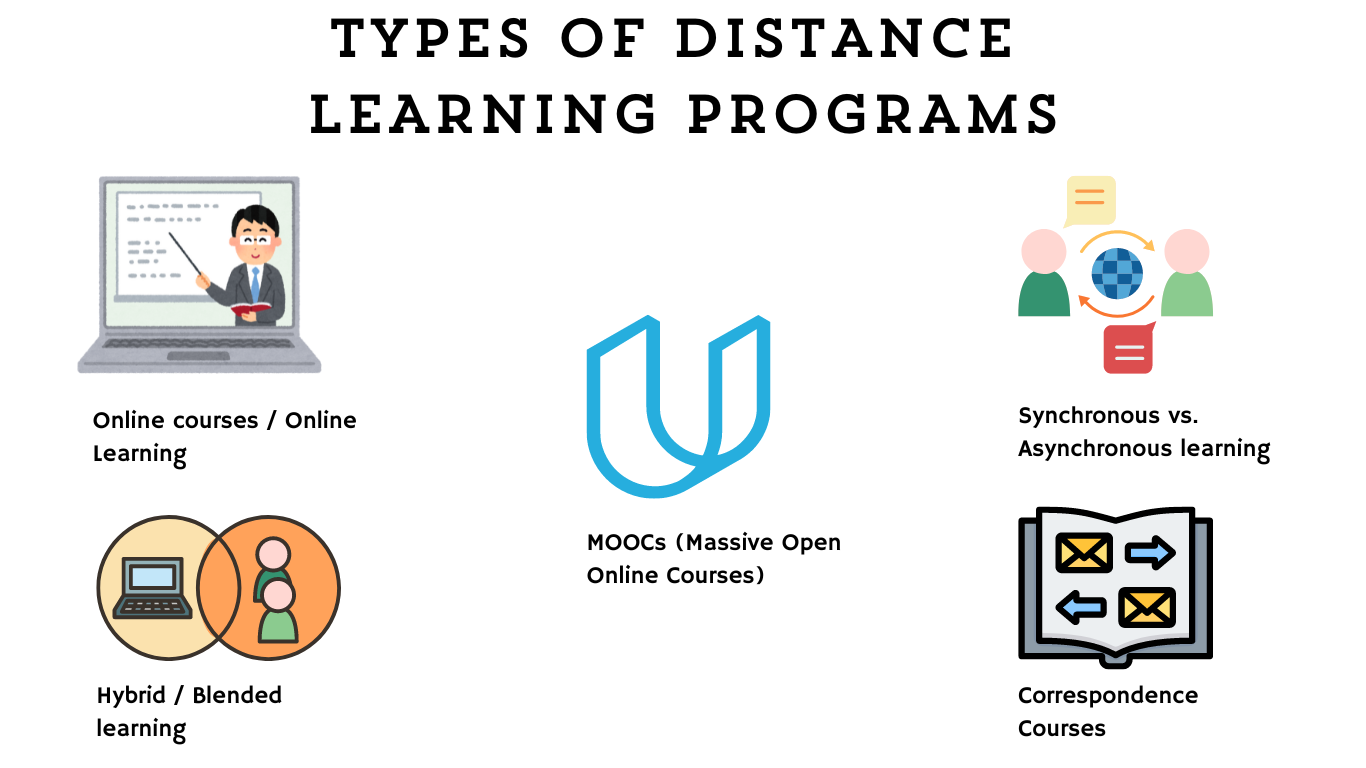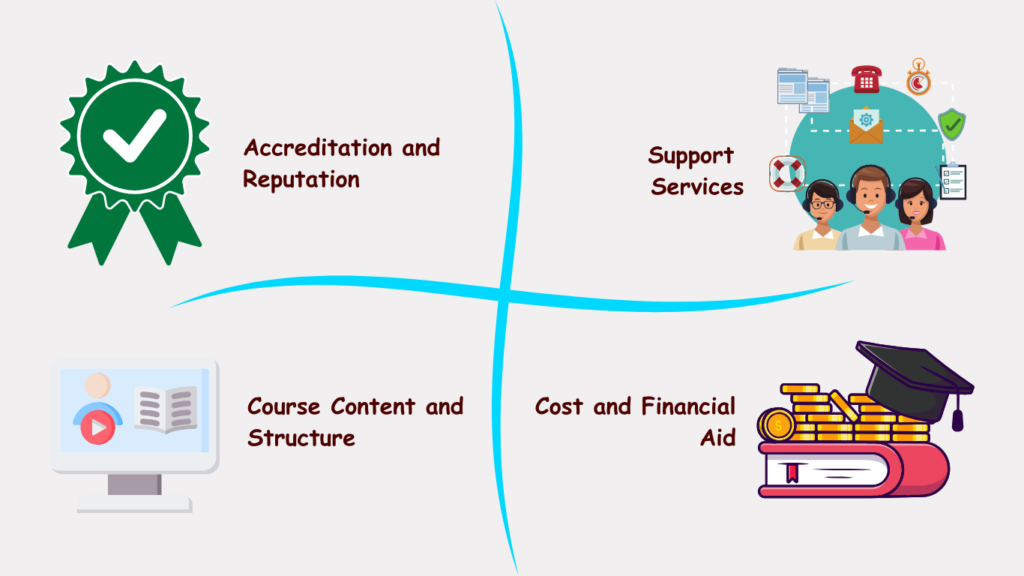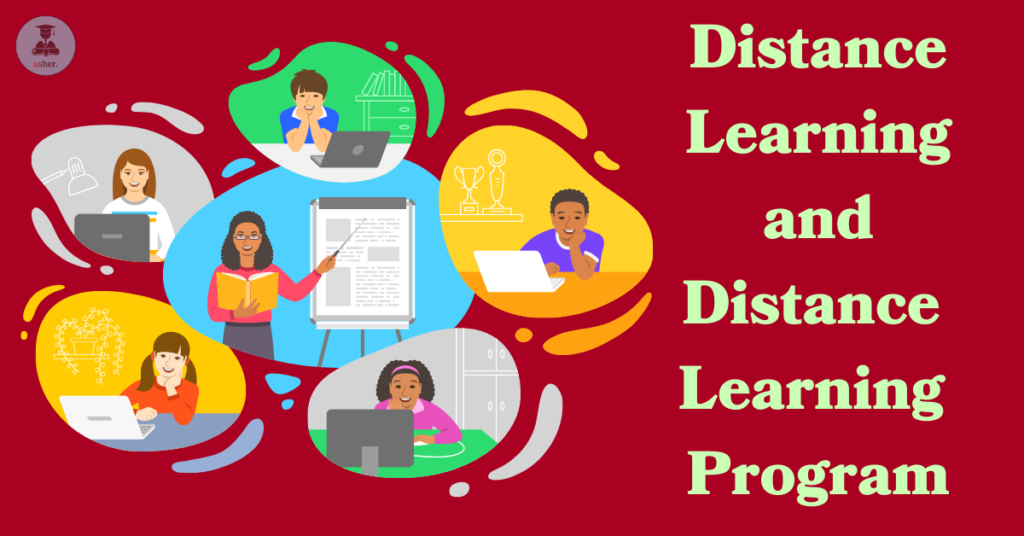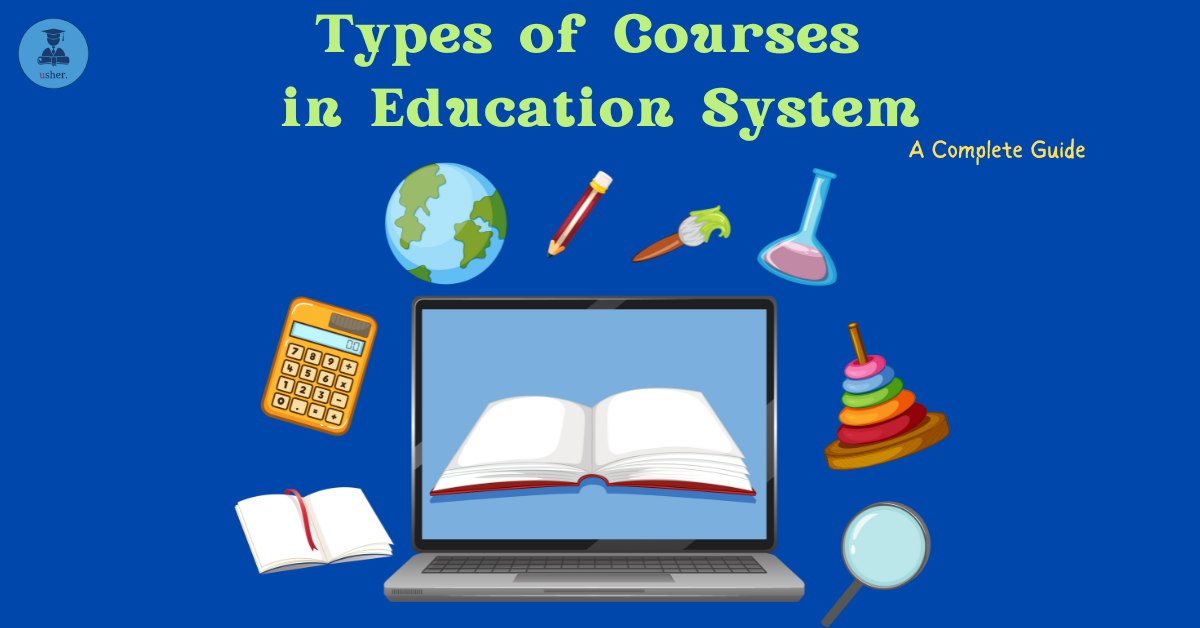Over the past ten years, the use of technology in education has led to a notable increase in distance learning programs.
There are countless education programs running that offer classes and study material to students even from afar.
Fun fact– 70% of students say online learning is better than traditional classroom learning.
What makes it a comfortable option is that it allows students to learn at their own pace and allows for enough flexibility and opportunities.
So what are these programs exactly, and who needs them? We’ll discuss all these questions in the article, so keep reading to find out.
What are Distance Learning Programs?
Distance learning programs are educational courses or programs that are delivered remotely, typically through online platforms or correspondence. These programs cater to individuals who may not have access to traditional classroom settings due to various reasons such as location, work commitments, or personal circumstances.
Students are free to learn at their own pace and are also provided lecture videos, notes, test sheets and study guides via the help of technology, thus also making it a more convenient option to choose. Students can learn from their homes at whatever time they want and choose their own pace.
So, does this sound like online learning?
Or is it really online learning with a better name?
Is online learning and distance learning the same?
Online learning and distance learning are often used interchangeably, but there are some subtle differences.
Distance learning typically refers to a more formal education process where students and instructors are physically separated, while online learning specifically involves the use of technology to deliver educational content.
Both options offer flexibility and accessibility for students who may not be able to attend traditional classroom settings.
Note: Online learning is a type of distant learning where the use of technology is adamant.
You’ll understand better if we break down distance learning into its different types:

Online Learning
These learning programs take place over the internet, allowing students to access educational materials and participate in discussions remotely. This type of learning is particularly beneficial for individuals with busy schedules or limited access to traditional educational settings.
Hybrid or Blended Learning
This is a combination of traditional in-person classroom instruction with online learning components. This approach offers students the flexibility of online learning while still providing valuable face-to-face interaction with instructors and peers. Hybrid learning is a popular choice for those who prefer a mix of both traditional and online educational experiences.
MOOCs (Massive Open Online Courses)
These are online courses that are open to unlimited participation and are typically offered for free or at a low cost. MOOCs allow individuals to access high-quality educational content from top universities and institutions around the world.
Synchronous vs. Asynchronous Learning
Synchronous learning refers to real-time instruction where students and instructors interact simultaneously, while asynchronous learning allows students to access course materials and complete assignments at their own pace.
Correspondence Courses
This is another method of distance learning programs where students get in touch with their mentors via the internet. Apart from attending lectures, students are assigned tasks with their deadlines and are advised to submit them via email. This is another method of making learning comfortable, engaging and productive.
Note: Distance learning courses or programs that are offered by universities and colleges provide you with the degrees, whereas other programs and courses offered by institutions and organizations may provide certificates or specialized training.
For instance, earning a master’s degree in digital marketing from a distance learning college will grant you a degree certificate, but pursuing the same course from any unrecognized institute or learning center will grant you a certificate of completion.
It is important to research and choose a program that aligns with your educational and career goals.
Pros Of Distance Learning Programs
There are various advantages of distance learning programs. In fact these advantages are being greatly recognised thus leading to their popularity among students. Here are some pros of Distance Learning Programs:
- Flexibility
Who doesn’t want a more flexible routine? Everyone has their own schedule. Distance learning programs offer flexibility in terms of scheduling, allowing students to balance their studies with work or other commitments. Students can also learn even if they’re traveling or are busy with family commitments.
- Accessibility
Even if the student belongs from the most rural areas, they don’t have to worry about attending classes for their chosen programs. Distance Learning Programs, in fact, have taken a special note, to make sure that every child receives an equal treatment and are provided with the same amount of supplies even if they are in totally different states. These programs have taken into account to supply proper education to every student regardless of all geographical barriers between the teacher and the student. In fact the comfort of getting every study material in a single device alone solves many issues that students have to face while getting education online.
- Affordability
Online learning aka distance learning programs are actually way much more affordable than campus learning programs. There are many students who, despite their wish of receiving a good level of education, are unable to get their favourite courses due to their high prices. It actually gets costlier when food, rent and other expenses are taken into account. Distance Learning Programs actually solve this problem, thus making them a rather cheaper alternative.
- Course Variety
Distance learning offers a wide range of courses from different institutions and experts around the world, allowing students to choose from a diverse selection of subjects that may not be available at their local institutions. This variety enables students to explore new interests and gain specialized knowledge in their desired field.
- Pace Friendly
Every student is different and has their own comfort level and studying pace. Many colleges and universities with campus learning programs do not consider this slight detail and students end up mugging instead of doing any actual learning. It becomes much more stressful for every student to keep up with the college, while also handling their part time jobs and other commitments. Distance Learning Programs are designed to trigger this issue so that the student doesn’t have to stress and can learn at their own pace.
- Convenience
Distance learning programs offer the convenience of studying from anywhere with an internet connection, allowing students to balance their education with work and other responsibilities. This flexibility enables students to create a schedule that works best for them, ultimately leading to a more successful learning experience.
- Technological Skills Development
This point is something one doesn’t really consider but in the modern world you are actually expected to be tech savvy and handle technological issues like a pro. Distance Learning Programs makes sure that every student gets to learn how to handle their computers and smartphones effortlessly and become technologically advanced and independent.
Cons of Distance Learning Programs
Everything that has a good side also has a bad side. We have already discussed the advantages of distance learning programs, but we are going to learn about the disadvantages that make distance learning programs a difficult choice too. Here are some cons of Distance learning programs:
- Lack of Interaction
Even though Distance Learning Programs have many advantages, many students yearn to get into a rather interactive environment like that in classrooms. Without any friends, classmates and discussions, learning becomes quite dreary and tough. This causes the attention and dedication to waver, thus making it one of the most dreaded forms of learning among students nowadays.
- Hindering Self Discipline
Students have to be disciplined in classes so that they don’t lose their dedication in studies, however, distance learning programs fail to do so. With more focus on sending study material and lectures, it becomes quite tough to maintain the discipline thus causing the students to break their flow and causing their dedication to die.
- Technical difficulties
This was a common problem during the pandemic when colleges promoting online learning were unable to get full attendance as many students had reported facing technical issues like problems with the internet, electricity, or even software issues. Learning becomes harder and more frustrating this way and it even gets worse on submission of online test papers or examination sheets.
- Limited hands-on learning
Without the ability to physically engage with materials or equipment, students may struggle to fully grasp certain concepts or skills, leading to a lack of practical experience that could be crucial in their field of study. This can hinder their overall understanding and retention of information, ultimately impacting their academic performance and future career prospects. - Distraction
The home environment is actually very distracting for students. They are completely devoid of the environment of learning in the classroom, and their attention may drift away. Therefore, most children perform better when they are attending campus classes.
How to choose the right Distance Learning Program?
There are 4 major criteria that would help you choose the right online learning/ distance learning program.

1) Accreditation and Reputation
Importance of Accredited Programs
- Quality Assurance
By being accredited, a school can be guaranteed to uphold strict quality and rigor criteria. Independent organizations conduct periodic reviews of accredited programs to ensure that their criteria are upheld. - Transferability
Transferring credits from accredited schools increases the likelihood that other colleges and universities will accept them. - Employment
Since accredited schools can guarantee a candidate’s educational background, employers frequently prefer degrees from them.
Researching the Institution’s Reputation
- Online Reviews and Ratings
Look for reviews and ratings from current and former students. Websites like shiksha.com, careers360 and online forums can provide valuable insights. - Alumni Success
Investigate the career paths of alumni. Successful alumni can indicate a strong program. Nowadays many alumni can be found on LinkedIn. - Institutional History
Consider the institution’s history and track record in distance education. Long-standing programs may have more refined and effective delivery methods.
2) Course Content and Structure
Evaluating the Curriculum
- Relevance
Make sure the course work fits your interests and career objectives. Examine the needed textbooks, syllabi, and course descriptions. - Up-to-Date Content
Verify that the course material is up to date and reflects the newest technological advancements and industry trends. - Specializations
Some programs offer specializations or concentrations. Determine if these align with your specific interests and career goals.
- Assessment Methods
Understand how you will be assessed—through exams, quizzes, projects, or papers. Ensure these methods match your learning style and strengths.
3) Support Services
Investigate whether you are provided with the following services:
- Tutoring and Mentoring
Verify whether the school provides services for academic support like writing help, tutoring, and mentorship. - Library Access
To assist with your studies, make sure you have access to digital libraries and research tools. - Career Services
Make sure of the availability of career counseling, job placement services, and networking opportunities.
- Technical Assistance
Reliable technical support is crucial for resolving any issues with the online learning platform or course materials. - Student Communities
Find out if there are online communities, clubs, or organizations you can join to stay connected with fellow students.
4) Cost and Financial Aid
Tuition Fees and Additional Costs
- Tuition
Compare the tuition fees of various programs. Remember that higher tuition doesn’t always equate to higher quality. - Hidden Costs
Be aware of additional costs such as technology fees, textbooks, and exam proctoring fees.
Scholarships, Grants, and Financial Aid Options
- Scholarships and Grants
Look for scholarships and grants offered by the institution or external organizations. Many programs provide financial aid specifically for online students. - Employer Assistance
Some employers offer tuition reimbursement programs. Check with your employer to see if they support continuing education. - Payment Plans
Investigate if the institution offers payment plans to help manage tuition costs over time.
Top Distance Learning Universities offered in India
The best distance learning universities in India are
Top Distance Learning Universities in the world
The best distance learning universities in world are
Who benefits from Distance Learning Programs?
- Working Professionals
People have to earn for their living keeping their education at stake. This used to be a major problem in the past, but the modern world has solved this issue by releasing such programs. Working people can never attend college at a steady pace, keeping their work-life balance. Distance Learning Programs give them the advantage of learning their favourite course from wherever they want. - Parents and Caregivers
There are many students who have to handle their family responsibilities at a young age. These programs solve their issues by allowing them to learn at their homes or wherever they find convenient, at their own pace. - Remote Learners
Every student is not expected to live in urban places at a short distance from their college. There are many students who are unable to afford to move into a completely new area with a decent amount of money to help them out throughout their college years. Distance Learning Programs serve as a boon to these young enthusiasts and make sure that every student receives an equal quality of education. - Individuals with disabilities
This world houses bazillions of souls, each having their own struggles. It is very hard for a disabled person to attend campus classes as they are completely alien to that place and may also be uncomfortable with the environment. Distance Learning Programs make sure that they receive proper education from the comfort of their homes. - Self paced learners
We all have our own pace. Some can go through a chapter in probably two hours and some in three. However, adjusting with the pace of colleges and universities can be pretty stressful and scary at one point for every student. Distance Learning Programs make it rather convenient for students to study at their own pace, thus making learning easier and more comfortable.
Future of Distance Learning
The future of distance learning is poised for exciting advancements and innovations. Technological advancements like AI and machine learning will personalize learning experiences by adapting to each student’s needs, while virtual and augmented reality (VR/AR) will create immersive environments that simulate real-world experiences. The growth of micro-credentials and certificates will offer short, focused courses that can be combined into larger qualifications, allowing for flexible and specialized learning. These programs will be designed with input from industry leaders to ensure relevant and up-to-date skills.
Hybrid learning models will become more prevalent, combining online and in-person instruction for greater flexibility and interaction. This includes flipped classrooms, where students watch lectures online and use in-person class time for interactive, hands-on activities. Increased acceptance and recognition of online education will also be seen, with more employers valuing online degrees and improved accreditation standards ensuring quality and credibility.
Expanding internet access and making affordable technology available to students in remote and underserved areas will improve accessibility and inclusivity on a global scale. Programs will be designed to accommodate diverse cultural backgrounds and languages, making education more inclusive. Lastly, there will be a strong focus on developing soft skills like communication, teamwork, and problem-solving, as well as encouraging lifelong learning through flexible courses that allow individuals to upskill throughout their careers.




